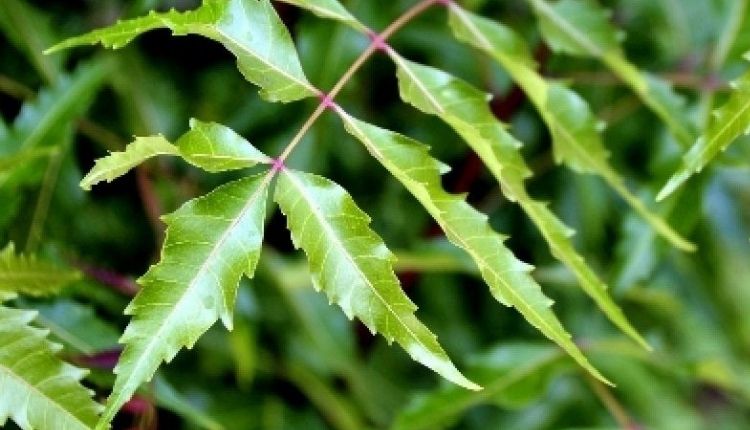Why neem tree is the best organic pesticide?
Scientists told how to make and use a dozen products to make organic fertilizers and pesticides from neem, how can farmers make home medicines from it themselves?
Neem tree is the only plant in the world which has amazing ability to treat humans as well as animals and plants from various diseases and harmful insects and pests. More than 125 chemicals based on neem tree have been discovered so far. Modern scientific researches have shown that Neem has the ability to control harmful insects and mites apart from treating various diseases of crops. Due to modern chemical farming, while there has been a serious threat to the health and environment of humans and animals, there has been success in getting rid of toxic pesticides by using neem. That is why special emphasis is laid on increasing the use of neem in organic pesticide and natural farming.
From ancient Indian texts and medical scriptures to modern scientific discoveries, neem has also proved its wonderful medicinal properties. Traditionally, the main use of neem in agriculture has been limited to food storage and control of parasitic insects of animals. Neem has more than one properties like antibacterial, anti-fungal, anti-viral, anthelmintic, expectorant, contraceptive, urinary and bile-related disorders, coolant, blood purifier, antipyretic, liver stimulant, anti-diabetic, dental and disease preventive. The effect of neem has also been seen on viruses of incurable diseases like AIDS. Due to these unique properties, neem has got epithets like ‘all-disease-preventive’, ‘neem-hakim’ and ‘one neem, hundred doctors’ and it remains an integral part of the Indian lifestyle.

Use of neem in organic farming
There is no other plant as useful as Neem in terms of organic farming. That is why scientists from Jodhpur-based ICAR-CAZRI (Central Arid Zone Research Institute) and Meerut-based ICAR-IIFSR (Indian Institute of Farming Systems Research) have developed neem seeds for use in organic farming. The process of making and using various products has been standardized. It is divided into products made from neem tree, leaves and its seeds.
Use of chemical fertilizers and pesticides is prohibited in organic or natural. That’s why the availability of nutrients like nitrogen mainly in the soil and prevention of diseases without chemical medicines becomes a big challenge. But the neem tree proves to be very helpful in dealing with these challenges and forms a solid foundation for organic farming. While the manure made from neem leaves and cake is used to make the soil fertile, its leaves, seeds, oil and cake are used in the prevention of insects and mites.

Products made from neem leaves
Neem leaves juice: To make ‘neem-parna-swaras’ juice from neem tree, leaves, soak one kilogram of neem leaves in 5 litres of water overnight. The juice of neem leaves is made by grinding and mixing the wet leaves in the same water the next morning. Sieve it with a fine cloth. For the treatment of insects like bollworms and harmful insects, 32 kg of neem leaves per acre and juice prepared from 160 liters of water will be required. Before every spraying of this, if the powder of khadi soap is also mixed in the juice, then the medicine will become more effective.
Neem-cow urine extract: To prepare it, grind 5 kg of neem leaves in suitable water. Make a solution by mixing this paste in 5 liters of cow urine and 2 kg of cow dung. For the next 24 hours, keep stirring this solution with a stick at an interval of a few hours. Then filter the solution with a fine cloth and mix 100 liters of water in it. This quantity will be required for spraying in one acre. It has been found to be very effective on insects like leaf suckers and mealy bugs of standing crops.
Besaram-Chilli-Garlic-Neem Extract: To make this extract, grind 1 kg of Besaram (Behya) tree leaves, 500 grams of hot green chilies, 500 grams of garlic and 5 kg of neem leaves and add 10 liters of cow urine to this solution. Boil it so much that its quantity reduces to half. Then filter this extract with a fine cloth and keep it in bottles. The extract has been found to be highly effective against leaf-roller, stem, pod and fruit borer insects. Mixing 3 liters of this extract in 100 liters of water should be sprayed in one acre field.
Dasparni extract: To make this, prepare 5 kg of neem leaves, 2-2 kg of giloy, pineapple, red kaner, madar and karanj leaves, besides 2 kg of green chillies and 250 grams of garlic paste or sauce. Then mix 3 kg cow dung and 5 liters of cow urine and 200 liters of water in it and let the solution rot for a month. During this, he kept stirring it twice a day with a stick for 5 minutes. After a month, filter this extract and fill it in bottles and for the next 6 months, spray it like a pesticide for the prevention of common pests and diseases in the crop. Do it for management. Dilute 300 to 500 ml of Dasaparni extract in 15 liters of water before spraying. This quantity is sufficient for one acre.
Mixed leaf extract: To prepare this extract, grind 3 kg of neem leaves with 2 kg each of pineapple, papaya, pomegranate and guava leaves. Then mix this paste with 10 liters of cow urine and boil it until its quantity becomes half. Filter this mixed extract the next day. It can be kept in bottles for 6 months. Mixing 2.5 liters of mixed extract in 100 liters of water and sprinkling it on one acre crop effectively prevents insects that bore holes in stem, fruits or destroy them by sucking them.
b) Products made from neem seeds
The element called ‘Azadirachtin’ found in neem plays the most effective role in eliminating germs and insects. The highest quantity of this substance is found in neem seeds i.e. nimoulia. That’s why neem seeds are very effective in making organic pesticides. The following medicines are made from neem seeds –
Neem-giri-powder: Make a fine powder by grinding the dried seeds of neem. This powder can be mixed with grains at the rate of 2 percent and used for storage. This powder can be mixed in equal quantity with wood sawdust or paddy husk or black clay and its small tablets can be made. Effective control of stem borer insects can be achieved by scattering these tablets at the rate of about 100 kg per acre in maize or jowar field.
Neem seed tablets: Scientists at ICAR-CAZRI have developed a special neem tablet (pellet) by using neem seed powder containing about 12 to 15 percent neem oil and one percent eucalyptus oil. Spraying of 100 tablets per acre in the field gives effective control of pests like termites, white hoppers and nematodes for the next ten months.
Neem Seed Kernel Extract (NSKE): This is the extract of the kernel of the Neem fruit. There are two ways to make it – first, grind 3 kg of fresh kernels and 5 kg of kernels older than two months to make powder. Take care at this time that neem oil does not come out from the seeds. Under the second method, soak 5 kg of kernels in 10 litres of water for 4 hours. Then grind this wet kernel and make a paste like lei. Dissolve this paste in 10 litres of water and leave it overnight. The next day, after stirring this mixture well with a stick, mash it with a fine cloth and filter it. Mix 25 litres of water and about 350 ml of khadi soap solution in 10 litres of neem seed kernel extract before spraying in the fields. In one acre crop, 250 to 300 such solution should be sprayed as organic insecticide.
Garlic neem extract: Mix one kg garlic, half a handful of neem kernels, 10 kg neem leaves and 500 grams neem stem bark with suitable water to make a paste. Mix 12 litres of water in this paste and boil it. After cooling, filter the mixture with a fine cloth and fill it in bottles and keep it in the shade for 4-5 weeks. Dissolving this garlic neem extract in 500 ml per 15 litre of water and sprinkling it every week gets rid of many types of insects.

Prevention of insects with neem in grain storage
Shade-dried neem leaves should be used to protect grain stores from insects. Spread a centimeter thick layer of these leaves on the bottom of the sacks or storage-vessels. Then make a height of one foot and fill the grains. Now spread a centi thick layer of dry neem leaves. Then fill one foot of grain on it. In the same sequence, make the topmost layer of storage also of dry neem leaves. Keep in mind that this method of protection from insects does not prove to be effective for those grains which have already come under the grip of insects.
Similarly, mixing the powder of dry leaves of neem in the ratio of 2 to 5 percent in the total quantity of dry grains can also keep them safe from insects. Another method is to soak and dry those jute sacks in an extract prepared by boiling 10 kg of neem leaves in 100 litres of water and use it for grain storage. Similarly, before filling grains in an earthen storage vessel, apply a thick paste on its walls and lid, which is prepared by mixing the powder of neem leaves with wet soil. After drying of the coating, the grain kept in it remains safe from insects.
Every part of neem is useful
Where the daily routine starts with neem teeth and by lighting a lamp of neem oil, drives mosquitoes away and goes on to sleep peacefully. That’s why in many areas of the country, it has been a tradition to plant the neem tree outside the house.
In Ayurveda, where neem leaves, bark, stem juice, flowers, gum, fruit, seeds and oil are used in various medicines, while in agriculture, neem leaves, Seeds, oil and cake are used. Neem oil is brownish-yellow in colour, non-drying, unpleasant odour and extremely bitter taste. Neem is called Bhanimba in Atharveda, while in Puranas, Upanishads and Ayurvedic texts like Charaka and Sushruta Samhita, its properties are described by names like Nimba, Pichumard, Tiktaka, Pichumand, Arishta, Paribhadra, Hingu, Hinguniriyas etc.
Contact us: If farmers want to share information or experiences related to farming with us, then they can do this by calling us on the phone number 9599273766 or by writing an email to [email protected] or by sending your recording. Through Kisan of India, we will convey your message to the people, because we believe that if the farmers are advanced then the country is happy.



